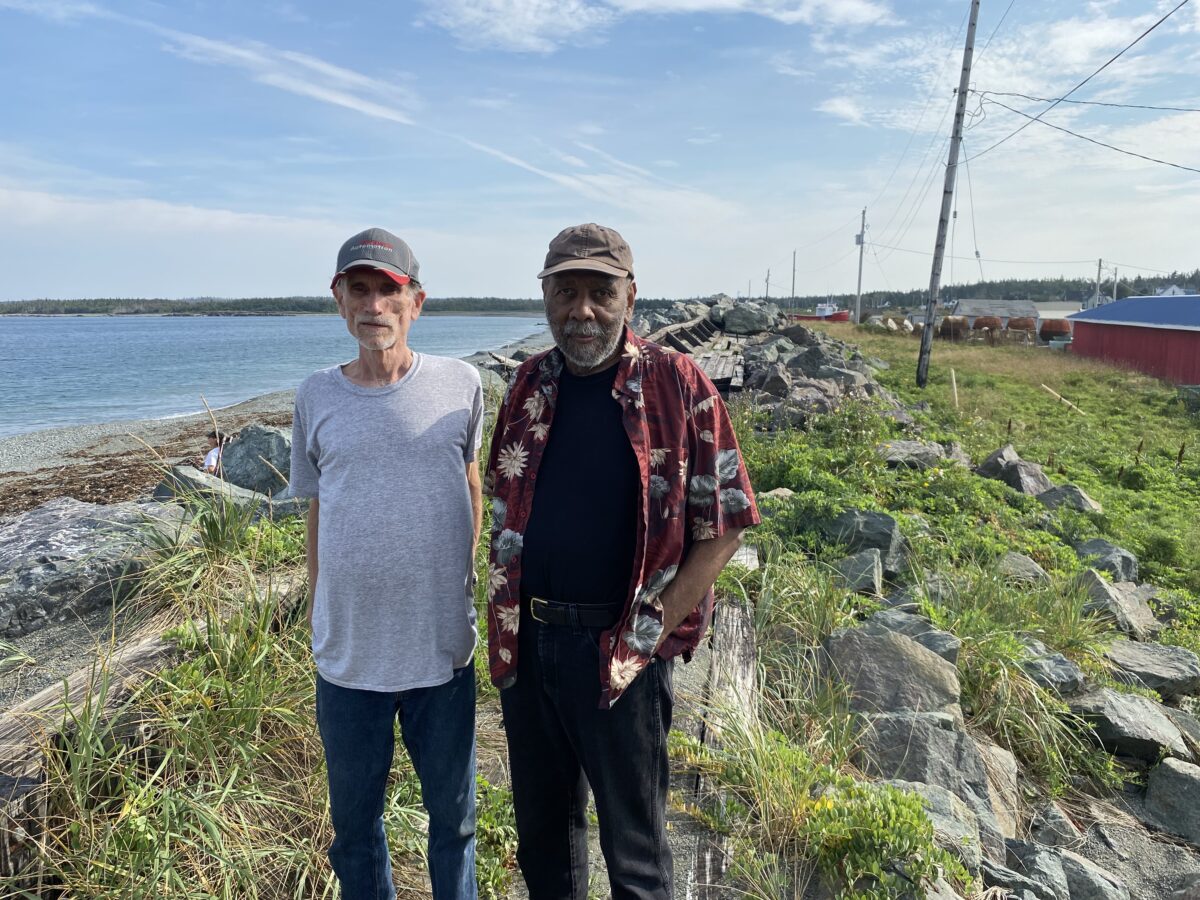Garbarus couple help community get ear of government

When Tim Menk and Gene Kersey decided to call Cape Breton their new home more than a decade ago, they probably had no idea they’d end up being as busy in “retirement” as they had been during their working lives.
The couple, who moved from the eastern United States to Gabarus, found both a beautiful community on the coast but also one teeming with problems — often the legacy of exploitation by predatory enterprises and neglect by various levels of government.
For one, the aging and battered seawall in Gabarus — a massive structure literally shielding the village from catastrophe — was badly in need of repair, and none of various levels of government were willing to take ownership and fiscal responsibility
for it.
“The government is going to do only what it can get away with, if it’s not held accountable,” says Kersey.
Gabarus, with a tiny population of 78 residents and no local municipal government, had no real way to make itself a priority in the eyes of decision-makers, and frankly, there was no one to even lead the charge. To make matters worse, the weather waits for no man. Hurricanes and storms, which lash the coast every year, were knocking sizable chunks off the Gabarus seawall. The situation was getting even more urgent.
“There is a fight in people,” says Menk, “but it has to be motivated by those who take action and can do the research and also know how to communicate.”
Menk, who has a history in publishing and marketing, and Kersey, who is an environmental engineer, were up for the unexpected challenge. Little did they know that the seawall issue would be the first of many in the area they now called home.
Also on their list — which seemed to grow daily — was relocating the historic lighthouse to save it from destruction at the hands of the North Atlantic; reconnecting a vital, abandoned road artery; and trying to introduce innovative aquaculture to the area in the hopes of revitalizing the local economy while also helping to heal the sea itself.
The pair eventually formed Arc Of The Coast Eastern Cape Breton Alliance, which, in short, aimed to bring together stakeholders of all levels, disciplines and jurisdictions to create beneficial long-term planning and economic development for Gabarus and, eventually, other places in similar predicaments.
“We don’t have a professional board of directors yet and we don’t have a succession plan in place,” says Menk, “but we want this organization to be built to go far beyond Gabarus.”
There are many coastal communities sharing these types of common threats. Most lack expertise, direction and ultimately know-how, especially when it comes to dealing with the various levels of government.
Kersey, who has decades of experience working in the United States with the Environmental Protection Agency, had accrued valuable insights into how to deal with elected officials.
“Governments are layered and are not monoliths,” says Kersey. “There are always ways in.”
“It’s all about talking to the real people who design and make policy. We’re not after photo-ops.”
The real art comes in balancing the sabre-rattling with the desire to find mutually beneficial solutions to problems. Communicating with the policy-makers themselves is key.
“There’s a social action part and then there’s the willingness of the government to respond to that,” says Kersey. “Unless you understand that, there’s going to be a lot of failures, and if there’s failures, no one is going to believe in it.”
“Ultimately, it becomes a question of ‘What does this need to look like for your boss to say yes?’ ”Menk’s publishing background and eloquence eventually got the story onto the front page of the Globe and Mail in 2013 and at that point, it became real to the people locally, which, in turn, created a groundswell of support.
“We’re hoping that a cooperative movement emerges here that embraces the idea that everyone has a place at the table,” says Menk. “But it also requires people that are willing to commit to the hard work and research to figure out what the avenues of attack are.”
Support for their initiatives has grown as the organization has become more recognized and respected.
At meetings, representatives from the various levels of government were present in unprecedented numbers and people’s frustrations with the lack of responses were being aired.
“We created an atmosphere that basically said, ‘To hell with you guys. We pay taxes, too, and we have a voice.’ ”Gabarus is a proving ground for the rest of Cape Breton. There were two non-profit associations in Gabarus when Tim and Gene arrived. Now there are six.
“They all activated because people saw that something can be done,” says Menk.
The hope is to grow a model that can have a similar impact in other areas that share similar concerns.
“There are creative ways of addressing the chronic problems that are being ignored to the detriment of the communities involved,” says Menk.
“We think Cape Breton has long enough been ignored and abused by remote decision making and we want to help see a new age dawn here.”
“We have government support, so now it’s a matter of visiting communities and showing them the. opportunity that exists.”
When asked if the pair’s arrival in Cape Breton is the hand of fate at work, Kersey responds: “People believe we came here for a reason.”
Arc of the Coast Eastern Cape Breton Cooperative Alliance operates as a regional planning and economic development organization that is creating sustainable coastal communities through cooperation and collective action on all levels. If yours is a community facing similar challenges visit arc-otc.ca for more information or contact AOTC Director Tim Menk via gabarusbay@gmail.com or 902-595-2658.



